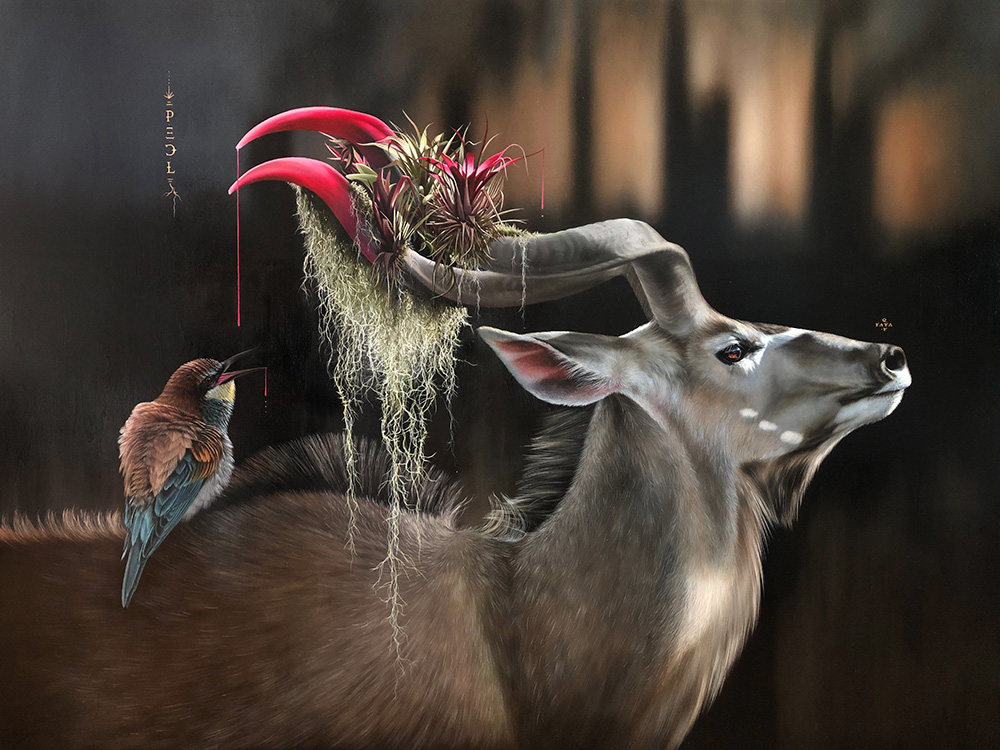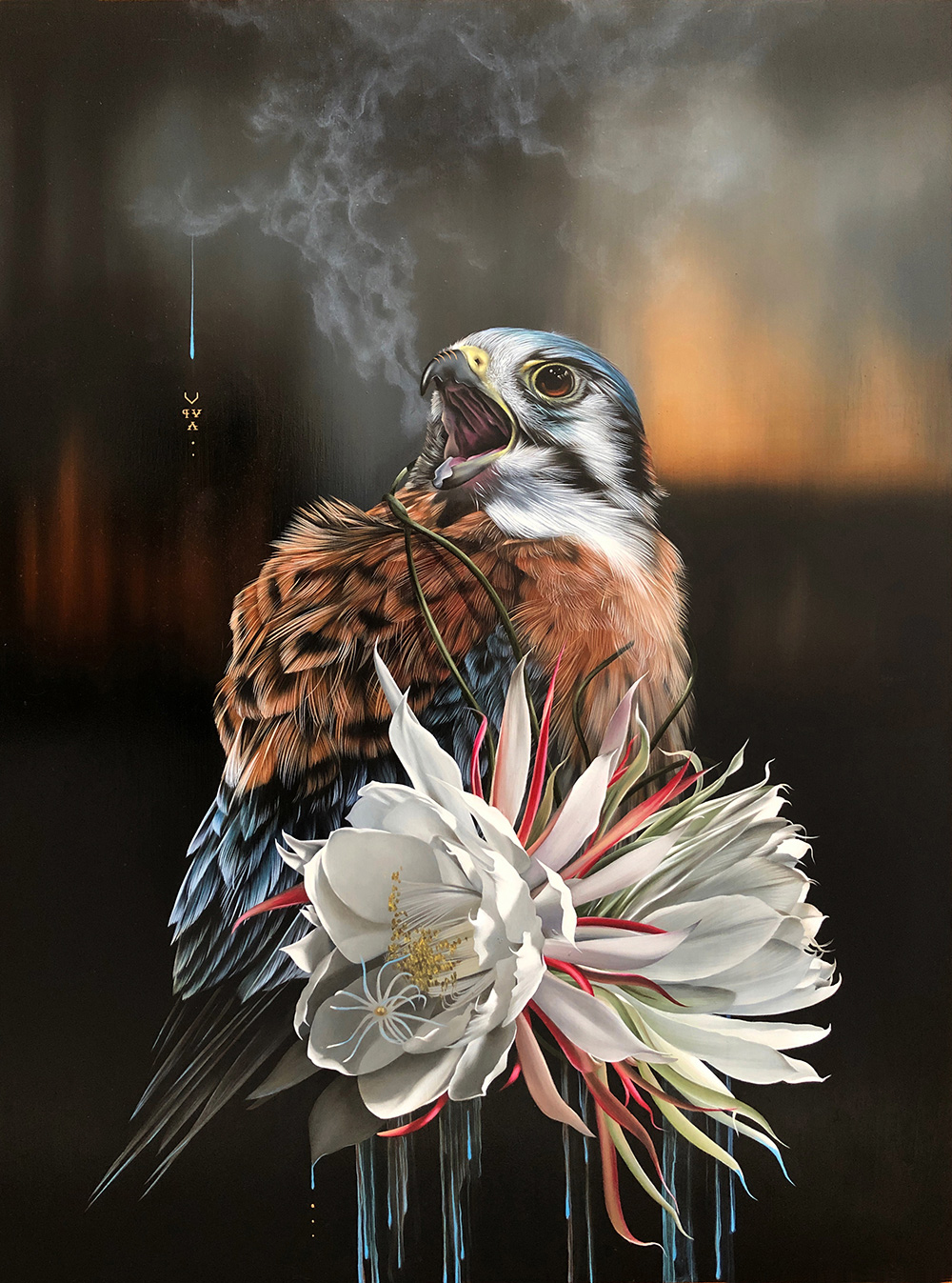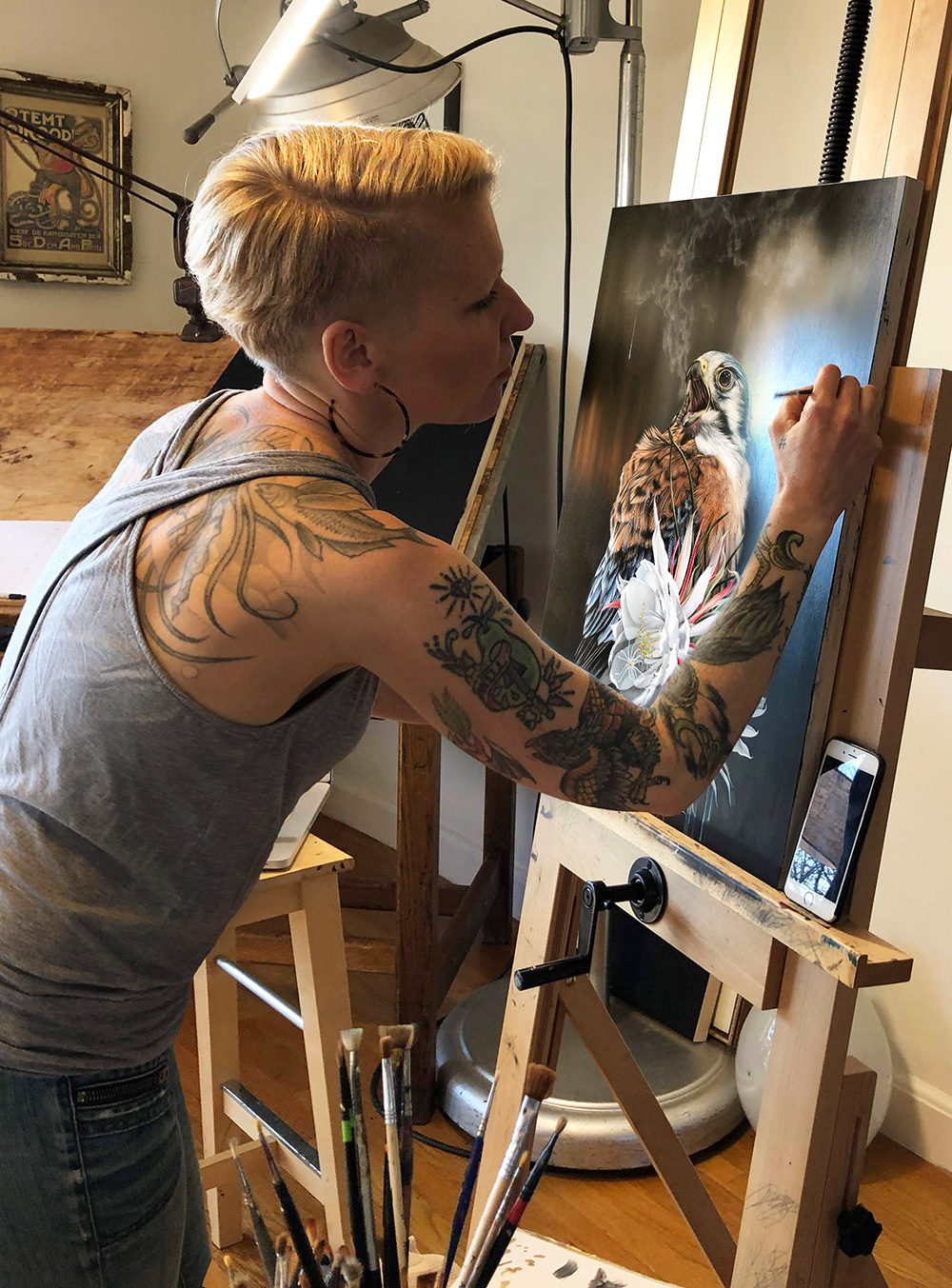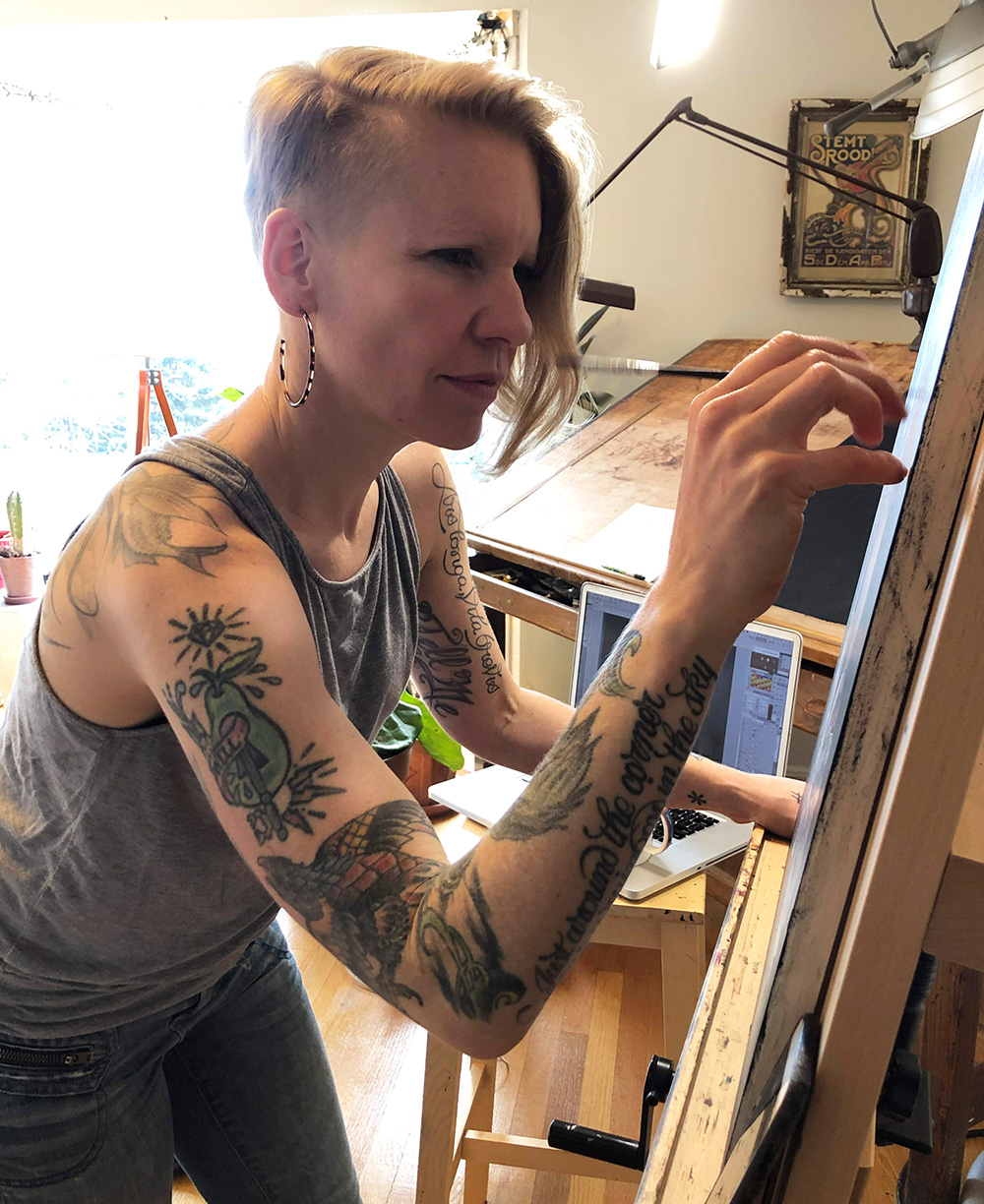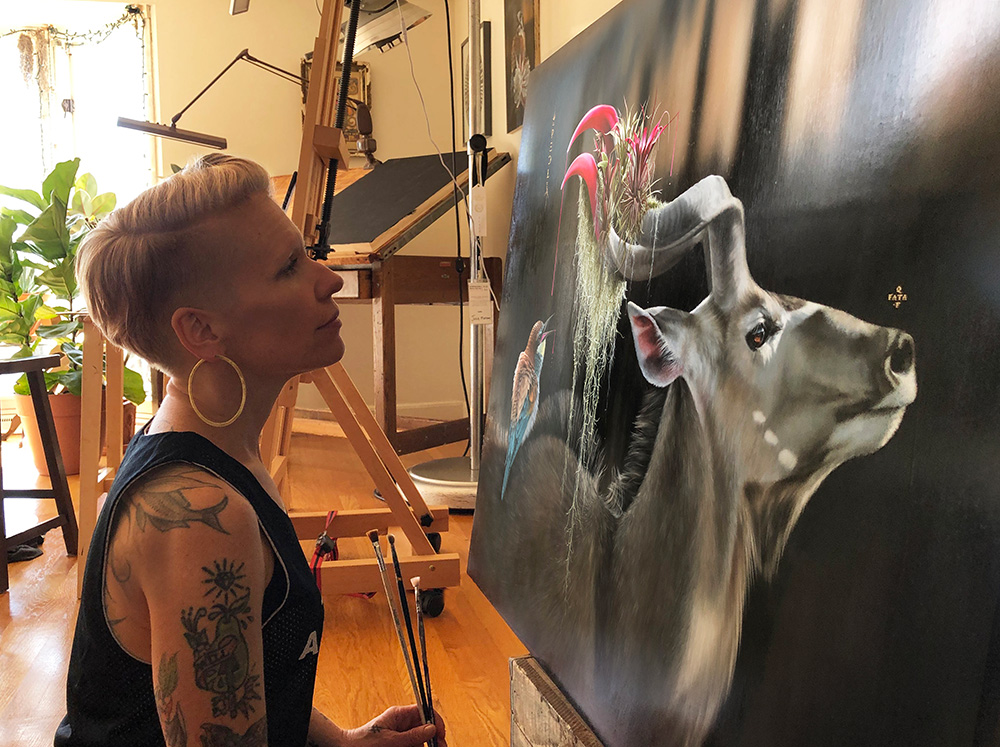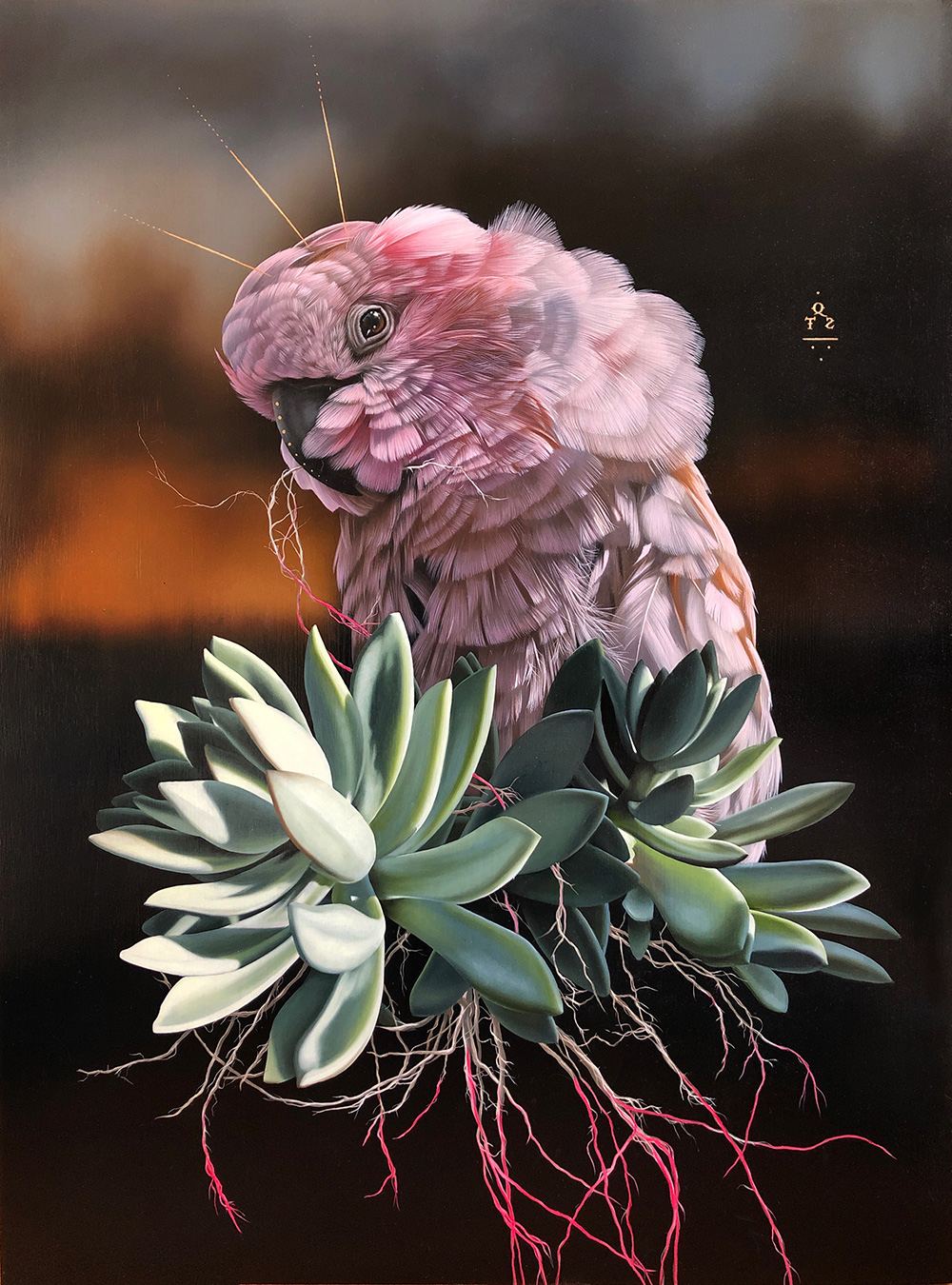Los Angeles’ Corey Helford Gallery is currently preparing for their latest solo exhibit, The Remediators, by Boston-based painter and designer Josie Morway. A self-taught artist, Morway’s extremely detailed style of oil and enamel painting on wood panels combines the influence of Dutch Masters’ techniques, religious icon paintings, and hyper-modern color and design elements, to create paintings that have been described as “votive cave paintings from the distant future.” The wildlife in Morway’s work is portrayed with an intense reverence that escalates to surreality, creating paintings that are both politically charged and ethereally poetic.
In creating her show The Remediators (featuring ten substantial pieces (ranging from 16”x20" to 36”x48") and four smaller works (8”x10"), Morway has been thinking with increasing urgency about threats to the natural world. “I have a deep love for wildlife,” she says, “and an acute terror about the increasing imbalances in our ecosystems and the cavalier destruction caused by human industry. I’m always seeking to address these concerns in my work, and I’ve started including more explicit references to threats in my compositions, but I find I’m constitutionally unable to portray my animals in a state of despair or diminishment. Instead, I feel compelled to give my subjects the gift of a sort of supernatural resiliency.”
Inspired by research into processes of bioremediation – by which plants, animals or microorganisms break down contamination in soil or water, Morway’s new paintings portray a new system by which nature might respond to crisis. This is a world in which flora and fauna are intertwined in a dance that seems by turns inspiring and disturbing, suggestive of symbiosis or entanglement, adaptation or mutation.
She adds, “I think of these paintings as somewhat talismanic, and the stranger elements are also my attempt to arrest the viewer, my plea for attention, reflection, respect. The creatures here have almost magical powers of transformation and protection, though what exactly they’re transforming into is unclear. Nature is changing, for sure, and we should never be complacent about what that change may mean.”

